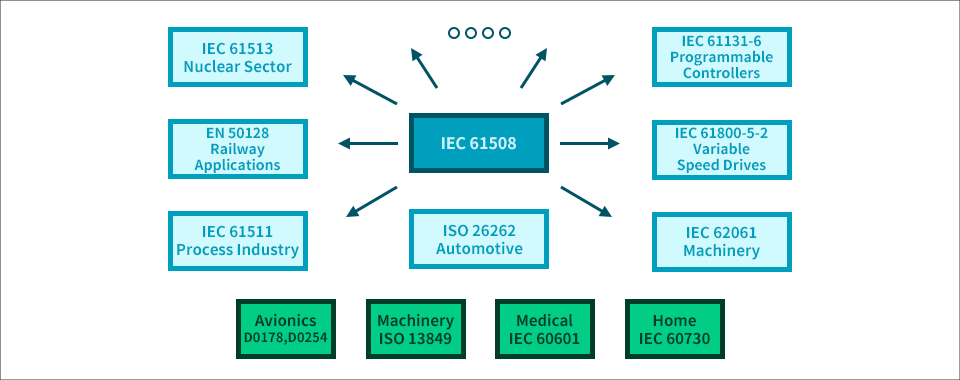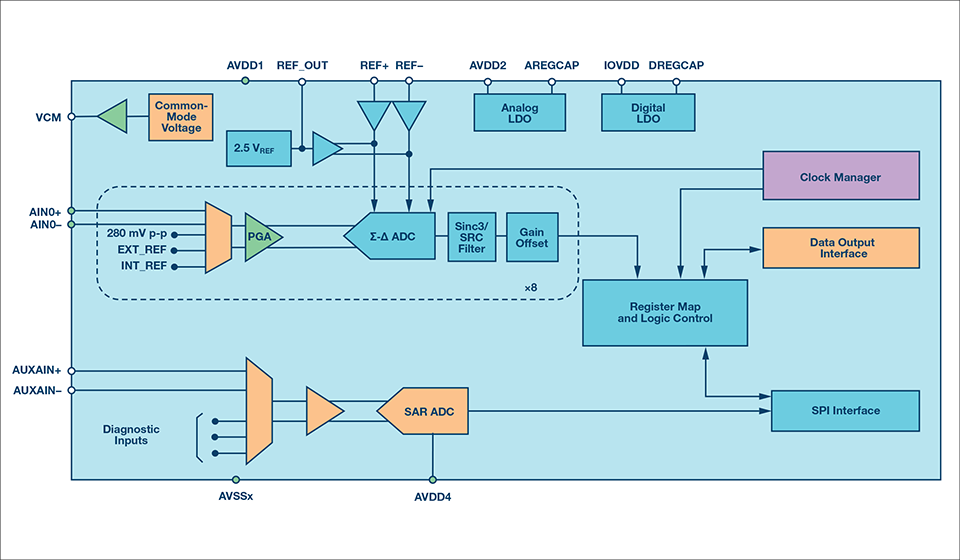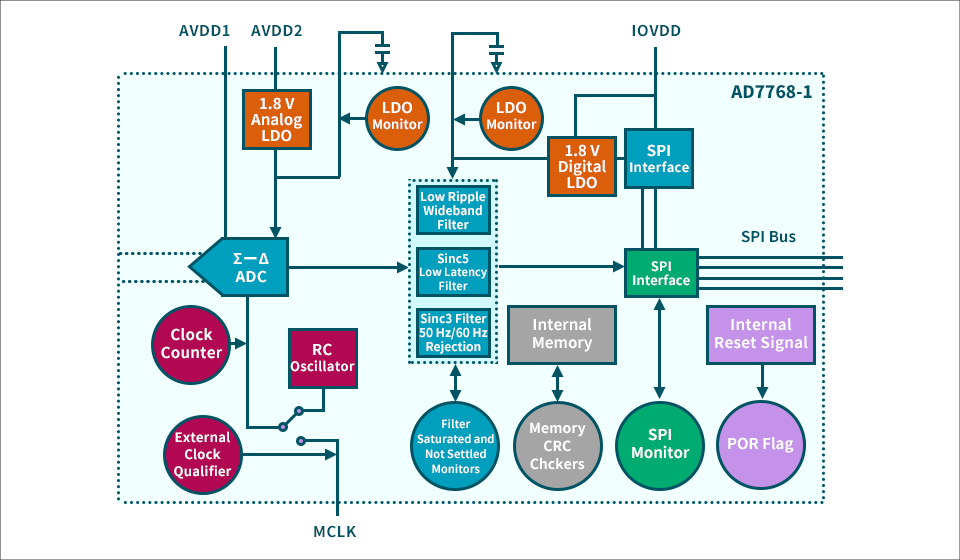What is functional safety?
Functional safety is a method of ensuring an acceptable level of safety by introducing functions to ensure safety. IEC 61508 is a standard that defines the design of industrial equipment based on functional safety. Based on IEC 61508, standards for various industries have been developed, such as ISO 26262 for automobiles and IEC 61131-6 for programmable controllers.
There are other functional safety standards such as ISO 13849 and DO178B/DO254, but these are not derived from IEC 61508.

Relationship between functional safety and SIL
SIL (Safe Integrity Level) defines the level of risk reduction achieved by a safety function and is a measure of the safety performance of a system. In IEC 61508, SIL is divided into four levels, from 1 to 4, with each level indicating higher safety. There are other functional safety standards that are equivalent to SIL.
For example, automobiles have Automotive Safety Integrity Levels (ASIL) and ISO 13849. ASIL Performance Levels (PL) A to E can correspond to SIL1 to SIL3.
|
IEC 61508 SIL |
ISO 26262 ASIL |
avionics level |
ISO 13849PL |
nuclear power Category |
|---|---|---|---|---|
|
1 |
A |
D |
b | | e ー |
A | | | C |
|
2 |
B |
C |
||
|
3 |
C/D |
B |
||
|
4 |
- |
A |
Rough correspondence to the safety integrity levels established for each application area (Source: Analog Devices, Inc. "Functional Safety in ICs")
What are the diagnostic functions required for functional safety?
IEC 61508 uses two probabilities as targets: PFD (Probability of Failure on Demand) and PFH (Probability of Failure per Hour). PFD applies to systems that are kept in standby until an event such as an airbag occurs, while PHF applies to systems that are always on.
|
PFDs |
PFH |
standard |
||
|---|---|---|---|---|
|
SIL per IEC 61508 |
Automobile ISO 26262 ASIL |
avionics level |
||
|
0.1 to 0.01 |
10̄⁵ to 10̄⁶ |
1 |
A |
D |
|
0.01 to 0.001 |
10̄⁶ ~ 10̄⁷ |
2 |
B |
C |
|
0.001 to 0.0001 |
10̄⁷ ~ 10̄⁸ |
3 |
C/D |
B |
|
0.0001 to 0.00001 |
10̄⁸ to 10̄⁹ |
4 |
A |
|
Rough correspondence of the levels defined by each standard (Source: Analog Dialogue 51-02)
IEC 61508 defines the Safe Failure Fraction (SFF) as the minimum level of diagnostic coverage. SFF, which considers safe and dangerous failures, is a related but different metric to DC (Diagnostic Coverage), which ignores safe failures. The proper functioning of the implemented diagnostics can be measured using a quantified Failure Mode and Effect Analysis (FMEA) or Failure Modes Effects and Diagnostics Analysis (FMEDA).
The probability of an undetected fault occurring decreases with higher DC. If the system has a diagnostic coverage of 99%, SIL3 can be achieved, 90% for SIL2 and 60% for SIL1. One way to achieve high diagnostic coverage is to use redundancy at the component level, where errors are not detected directly but indirectly by comparing two (or more) outputs that should be identical. However, this approach can increase the power consumption and final cost of the system.
Analog Devices offers a portfolio of robust and diagnostic products that help you achieve functional safety without increasing power consumption or cost.
Analog Devices Products Supporting Functional Safety Designs
8-channel simultaneous sampling 24-bit A/D converter AD7770
The AD7770 contains a 12-bit A/D converter and a multiplexer that can be controlled through three GPIOs. These features allow diagnostics of the AD7770 without shutting down the Σ-Δ ADC channels for normal system measurements.
In the AD7770 functional block diagram below, blocks containing supervisory functionality are colored purple, blocks capable of active monitoring are colored green, and blocks with both internal and active monitoring functionality are colored blue.

AD7768-1 24-bit A/D converter capable of dynamic signal analysis from DC to 204 kHz
The AD7768-1 has an on-chip multiplexer for analog diagnostics and a cyclic redundancy check (CRC) that allows the following monitoring and diagnostic functions:
・SPI health monitoring
・Monitoring the output level of the LDO
- Filter saturation detection
・External clock diagnosis
- CRC diagnosis of internal logic/memory

Low power consumption, low noise, fully integrated 24-bit A/D converter AD7124 series
The AD7124-4 (4 channel) and AD7124-8 (8 channel) have extensive diagnostic capabilities such as CRC, signal chain checks, and serial interface checks as part of their comprehensive feature set. These features eliminate the need for external components to implement diagnostics, reducing board space, shortening design cycles, and reducing costs. Additionally, the Failure Modes Effects and Diagnostics Analysis (FMEDA) of a typical application shows a Safe Failure Fraction (SFF) greater than 90% according to IEC 61508.
You can learn more about other features of the AD7124 series in the article below.
16-bit D/A converter with HART connection and dynamic power consumption control AD5758
The AD5758 features a 12-bit analog-to-digital converter for output current monitoring and diagnostics. The AD5758 interface also features an optional SPI cyclic redundancy check (CRC) and a watchdog timer. Robustness is enhanced by the inclusion of fault protection switches on the VIOUT, +VSENSE, and −VSENSE pins.
You can find out more about the AD5758 in the following articles:
Application example
- Programmable Logic Controllers (PLC) and Distributed Control Systems (DCS)
Process control
・Actuator control
- Data acquisition for temperature measurement, pressure measurement, etc.
・Smart Transmitter
- Channel isolation - Analog output
-HART network connection






Click here for recommended articles/materials
- 1.1Gbps Isolated LVDS ADN465x Series
- 24V output AC/DC reference board
- ±12V isolated power supply reference board specialized for PLC and FA equipment
- Let's use LTspice - How to use the .step temp command (Short Video)
- Let's try using LTspice - Checking the IV characteristics of a transistor (Short Video)
Click here to purchase products
Click here for manufacturer site/other related links
- Functional Safety in ICs (Analog Devices Technical Articles)
- Functional Safety in Data Acquisition Systems (Analog Dialogue 51-02)
- Σ-Δ ADCs for Functional Safety (Analog Dialogue 52-11)
- AD7770 Product Information (Various data can be downloaded here)
- AD7768-1 Product Information (Various data can be downloaded here)
- AD7124-4 Product Information (Various data can be downloaded here)
- AD7124-8 Product Information (Various data can be downloaded here)
- AD5758 Product Information (Various data can be downloaded here)
Inquiry
If you have any questions regarding this article, please contact us below.
Analog Devices Manufacturer Information Top
If you want to go back to Analog Devices Manufacturer Information Top, please click below.
